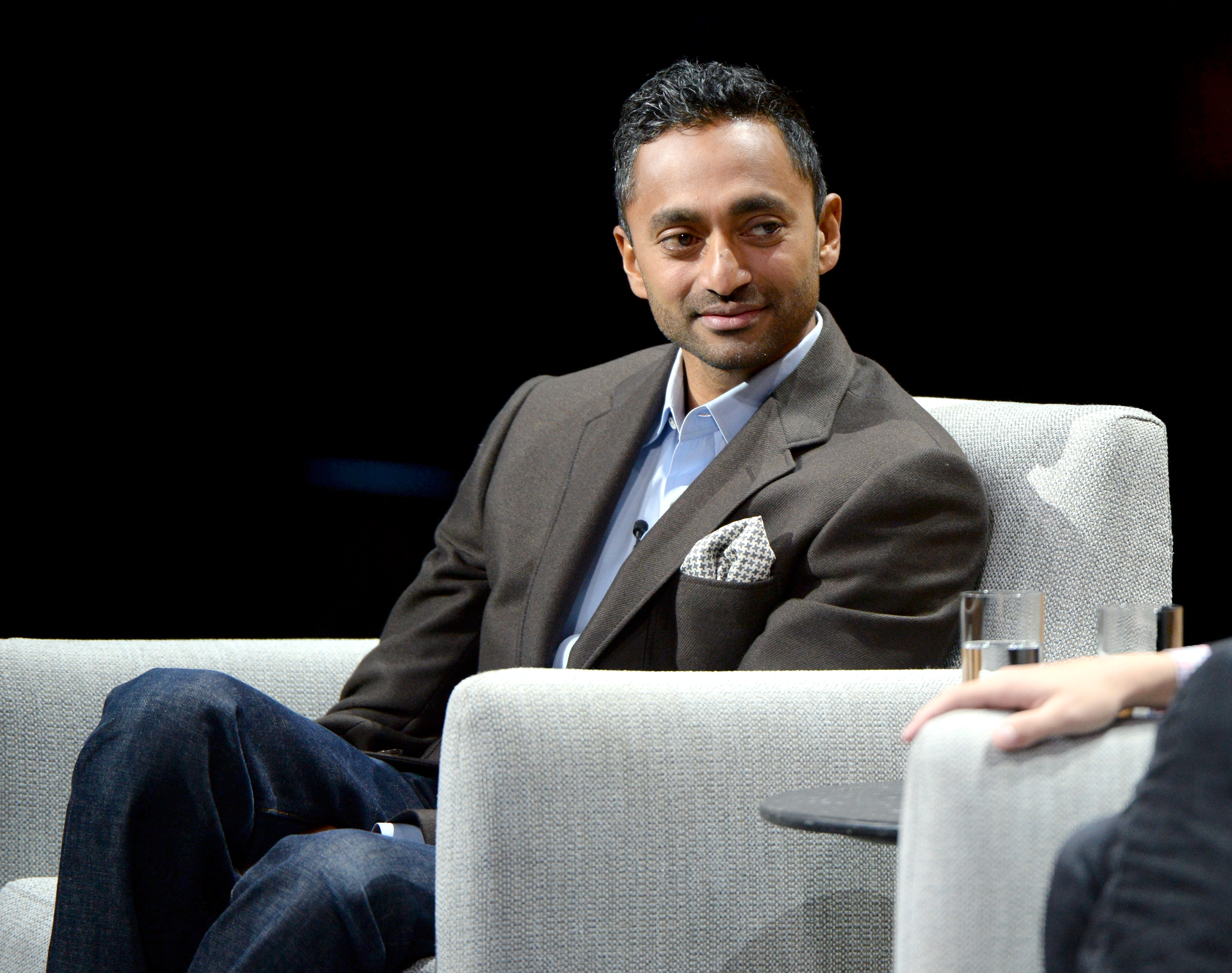Nine months ago, the once high-flying venture capital fund Social Capital made the bold decision to stop accepting outside capital and operate as a family office, in essence.
The co-founder of the outfit, brazen billionaire and early Facebook executive Chamath Palihapitiya, pledged to upend his investment strategy and make fewer but much larger investments as a means to improve his returns. Naturally, a near-complete exodus of Social Capital’s venture capitalists followed.
Today, the firm’s three founders, Palihapitiya, Mamoon Hamid and Ted Maidenberg, have gone their separate ways. Palihapitiya is rewriting the Social Capital playbook, Hamid is busy reinvigorating Kleiner Perkins and Maidenberg is building on top of the data-driven strategy and proprietary software dubbed “Magic 8-Ball” he built at Social Capital, with a new firm called Tribe Capital.
Quietly, Tribe Capital’s co-founders, Maidenberg and former Social Capital partners Arjun Sethi and Jonathan Hsu, have deployed millions of dollars in Social Capital portfolio companies like Slack and Carta, hired several former Social Capital employees and flexed a data-first approach that looks pretty damn familiar.
Data or bust

SAN FRANCISCO, CA – OCTOBER 19: Founder/CEO of Social Capital, Chamath Palihapitiya, speaks onstage during “The State of the Valley: Where’s the Juice?” (Photo by Michael Kovac/Getty Images for Vanity Fair)
Social Capital began laying the foundation for a data-driven approach to investing years ago. Now, Tribe Capital is doubling down.
From its founding in 2011, Social Capital established itself as a contrarian fund out to “fix capitalism.” Its strategy and reputation as an up-and-comer unafraid of new tricks earned it stakes in Slack, SurveyMonkey, Box, Bust and many other admirable upstarts.
As the firm matured, its partners experimented. In 2016, its early-stage investment team made the daring choice to rely on data rather than gut-feel alone to make its investment decisions, confronting a timeworn ideology that the best VCs have a special skill-set that enables them to spot future unicorns.
Using an operating system for early-stage investing dubbed “capital-as-a-service” and the growth and data analysis tool Magic 8-Ball — a sort of QuickBooks for startup data — Social Capital forwent the traditional pitch process and rapidly evaluated thousands of companies on the basis of metrics and achievements alone.
Palihapitiya, Maidenberg, Hamid and the other members of the partnership were on a mission to do venture the right way. Until they weren’t.
“I found us incrementally drifting away from our core mission, and our strategy was increasingly that of a traditional investment firm,” Palihapitiya wrote last year. “It became harder to take the risks we took in 2011 and it became easier to play the same game as every other VC.”
At its peak, Social Capital employed a team of 80. Once Palihapitiya confirmed his intent to transition the firm away from venture, the team began to shrink, fast. Today, the firm employs 30, including partners Ray Ko, Andy Artz and Jay Zaveri. One-third of that number were hired after the big pivot.
The Social Capital diaspora

Social Capital co-founder Mamoon Hamid left the fund in 2017 for Kleiner Perkins.
Social Capital’s former investors have since identified their second acts.
In the last year, Sakya Duvvuru, a former partner, founded Nellore Capital Management, and Carl Anderson, another former partner, started Marcho Partners.
Tony Bates joined Genesys as its CEO, Mike Ghaffary accepted a general partner role at Canvas Ventures, Ashley Carroll is consulting full-time, Kristen Spohn says she is still exploring opportunities, Adam Nelson joined South Park Commons as a venture partner and Tejinder Gill joined Collaborative Fund as a principal.
Hamid, for his part, resolved to re-establish Kleiner Perkins’ once-stellar reputation.
“Kleiner Perkins was a firm that was in desperate need of a change of its own,” Hamid tells TechCrunch. “It was a unique opportunity and I was about to turn 40. I thought, there is one thing I wanted to do in my career that I hadn’t done before and that was to turn around one of the best venture firms of all time.”
Hamid’s August 2017 departure from Social Capital represented the beginning of the end of the partnership. Though Hamid, a co-founder and leading dealmaker, asserts turmoil at the firm began after his exit.
Nine months after Hamid made the call to move on, Arjun Sethi, who once led Social Capital’s early-stage investment team, made the same call as did Maidenberg and Hsu. Simultaneously, growth equity chief Tony Bates and vice chairman Marc Mezvinsky were said to be departing.
The mass exodus continued, culminating in Palihapitiya’s final declaration: Social Capital was finished with venture capital.
‘Magic 8-Ball’ — reborn

Maidenberg, Sethi and Hsu built Tribe Capital in the image of Social Capital. With similar DNA, the three men are attempting to upgrade an early-stage investment strategy they not only created, but nearly perfected.
“Those guys did a very good job working for me,” Palihapitiya tells TechCrunch. “I’m super proud to see them launch their own venture fund. It was a really important, defining experience for me; I hope they have the same level of success, if not more.”
But where Social Capital was mission-driven, regularly backing healthcare and education businesses, Tribe Capital makes no such claim. And where Social Capital leaned on data to inform its investment thesis, Tribe is putting its full weight into it.
“We are believers that it’s hard to do a lot of things well, so we wanted to focus on one thing we are good at: early-stage venture with the approach of recognizing early-stage product-market fit,” Hsu tells TechCrunch. “At Social Capital we did that, but we did 30 other things, too.”
In total, seven former Social Capital investors and employees are working on Tribe. Georgia Kinne, a former Social Capital executive assistant, leads operations. Two former Social Capital data scientists, Jake Ellowitz and Brendan Moore, joined Tribe in the same role. And Alexander Chee, Social Capital’s former head of product development, is on board as an entrepreneur-in-residence.
Tribe won’t say how much capital they have raised yet or how exactly their three funds are structured, aside from confirming that only one is operating as a traditional venture fund. Paperwork filed with the U.S. Securities and Exchange Commission in late April, however, confirms a $150 million target for the debut venture effort. Tribe declined to comment on fundraising specifics.
It’s been a year since Tribe began investing. In that time, it’s put money in Slack, Front, Cover, SFOX and Prodigy. Most recently, it participated in Carta’s $300 million Series E, which valued the business at $1.7 billion. All of these companies, with the exception of Prodigy, were previously backed by Social Capital.
Tribe is making deals of all shapes and sizes across industries, with a particular focus on enterprise, fintech and SaaS startups. In addition to deploying heftier sums to late-stage businesses like Slack, Tribe has made 10 seed bets of roughly $25,000 each, leveraging its data platform to make investment calls.
“The income statement and balance sheet are the lingua franca for an established company to communicate the financial health of its business,” Hsu writes. “These accounting concepts are often unhelpful when inspecting an unprofitable early-stage company. For a startup, what’s needed is a common quantitative language for what matters, namely, a quantitative framework for assessing product-market fit.”
Tribe’s quantitative framework is called Magic 8-Ball, a diligence tool for potential investments created by Maidenberg and Hsu during their Social Capital tenure. The tool measures product-market fit, growth trajectory and more of early-stage businesses, where, as Hsu mentions, financial data may be lacking.
“We use data like accountants; it’s not a magical AI machine,” Hsu said. “If other firms want to copy, by all means, they can try. We aren’t here to be antagonistic, we are here to be partners to founders and other investors.”
So far, Magic 8-Ball has poured through data provided by some 200 companies, with plans to hit 1,000 per year. In total, Tribe has deployed $100 million.
Tribe’s 8-Ball tool is said to be much more complex than the earlier model, according to a source with knowledge of the platform. It’s like when Yahoo engineers Jan Koum and Brian Acton left the search and email giant to build something even better, the source, who asked not to be named, said. That business became the messaging powerhouse WhatsApp.
Hamid, who’s not affiliated with Tribe but aware of their investment strategy, made a similar comparison.
“It’s like if you’re an engineer at Cisco working on WebEx,” Hamid tells TechCrunch. “You’re a great engineer but you can do better, you can [do your own] company. Guess what? That’s Zoom. That’s Eric Yuan . And Zoom is worth $20 billion and WebEx was worth $3 billion. That’s pretty. That’s the story of Silicon Valley. That’s creative disruption.”
Hamid, however, was careful to point out the differences between Social Capital and Tribe. The DNA may be similar but they aren’t identical.
Social Capital represented a new kind of venture firm in favor of creative disruption. Tribe Capital represents a second go, a sort of Social Capital 2.0 sans Chamath Palihapitiya.
Bogged down by the conflict surrounding its leader’s flair for controversy, Social Capital wasn’t set up to succeed. The Magic-8 Ball, on the other hand, may be just right.
“Why did we get back together instead of going elsewhere? That is a reasonable question,” Hsu said. “We had good job offers but we had a viewpoint of the world that we wanted to keep working on together.”
![]()
Kate Clark
Source link


